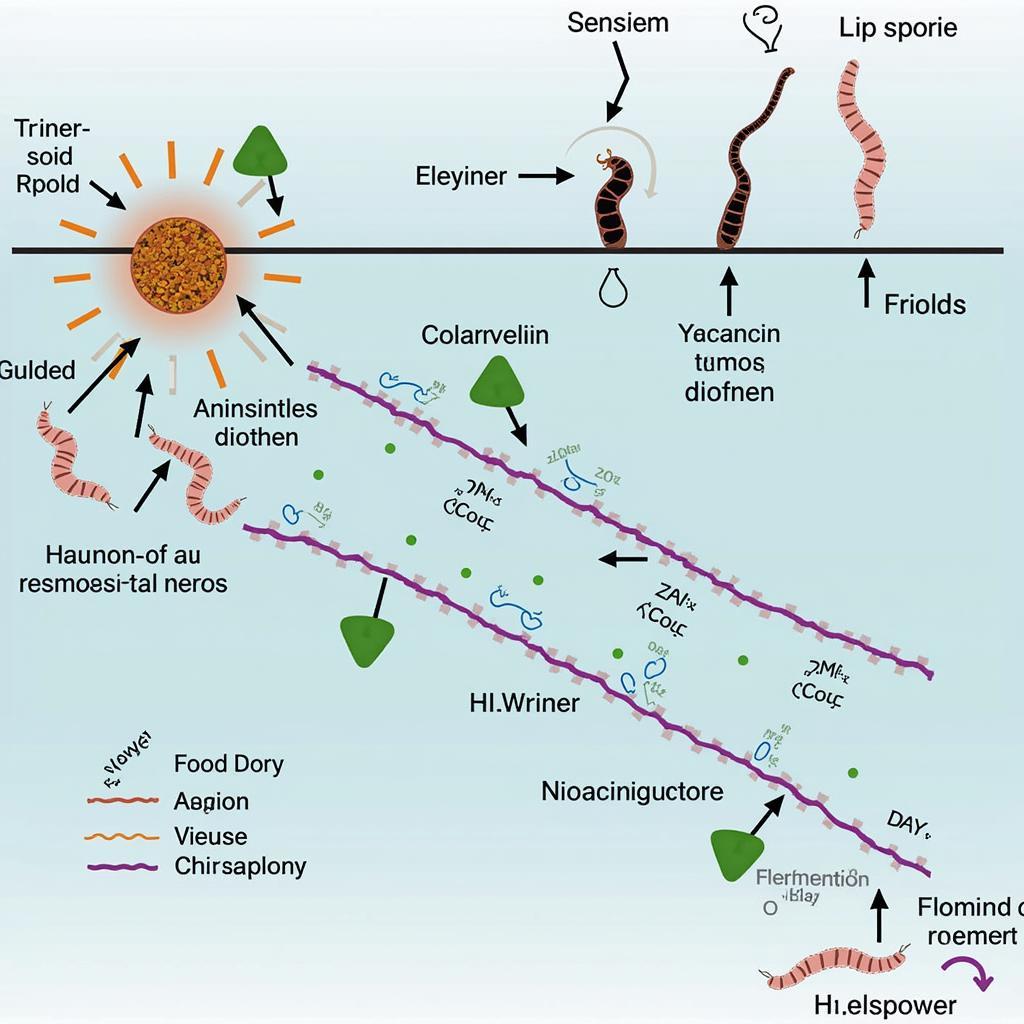ASE neurons in the nematode Caenorhabditis elegans (C. elegans) are a fascinating example of how sensory neurons function at a molecular level. These neurons, critical for chemotaxis, provide insights into how organisms perceive and respond to their chemical environment. This article delves into the world of ASE neurons, exploring their structure, function, and significance in understanding sensory biology.
Understanding ASE Neurons
C. elegans, a tiny, transparent worm, serves as a powerful model organism in biological research. Its simplicity and well-defined nervous system make it ideal for studying neuronal development and function. Among its various sensory neurons, the ASE neurons stand out due to their role in chemotaxis – the ability to move toward or away from chemical cues.
The ASE neurons are a pair of bilaterally symmetrical neurons located in the head of C. elegans. They are classified as chemosensory neurons, responsible for detecting specific chemicals in the environment. What makes these neurons particularly intriguing is their ability to discriminate between a wide range of attractants and repellents, allowing the worm to navigate its surroundings and locate food sources.
The Role of ASE Neurons in Chemotaxis
ASE neurons play a crucial role in guiding the worm’s movement in response to chemical gradients. When an ASE neuron detects a specific chemical, it triggers a signaling cascade within the cell. This cascade ultimately influences the worm’s motor neurons, dictating its direction of movement.
The left and right ASE neurons exhibit functional asymmetry, meaning they respond differently to the same set of chemicals. This asymmetry is essential for the worm’s ability to make fine-tuned decisions about its movement. For instance, a higher concentration of attractant detected by the left ASE neuron might cause the worm to turn left, while a similar signal to the right ASE neuron would result in a right turn.
 Chemotaxis in C. elegans
Chemotaxis in C. elegans
Molecular Mechanisms of ASE Neuron Function
The remarkable sensitivity and specificity of ASE neurons stem from the intricate molecular machinery within them. These neurons express a diverse repertoire of G protein-coupled receptors (GPCRs), which serve as the primary sensors for detecting external chemical cues.
Each type of GPCR binds to a specific ligand, triggering a downstream signaling pathway that ultimately leads to changes in neuronal activity. This complex interplay of receptors and signaling pathways allows ASE neurons to discriminate between a multitude of chemicals and elicit appropriate behavioral responses.
Significance and Future Directions
Studying ASE neurons in C. elegans offers valuable insights into the fundamental mechanisms of chemosensation, a process conserved across many species, including humans. Understanding how these neurons function at a molecular level could pave the way for developing novel therapies for diseases related to sensory impairment.
Furthermore, research on ASE neurons contributes to our broader knowledge of neuronal development, signaling pathways, and behavioral plasticity. As our understanding of these neurons continues to expand, we can expect even more exciting discoveries that illuminate the complexities of the nervous system.
FAQs
1. What are ASE neurons?
ASE neurons are a pair of chemosensory neurons located in the head of the nematode C. elegans. They are responsible for detecting chemical cues in the environment and play a crucial role in the worm’s chemotaxis behavior.
2. Why are ASE neurons important?
ASE neurons are essential for the survival of C. elegans, enabling it to find food sources and avoid harmful substances. These neurons are also valuable models for studying the molecular mechanisms of chemosensation and neuronal signaling.
3. How do ASE neurons work?
ASE neurons detect chemicals using specialized G protein-coupled receptors (GPCRs). When a chemical binds to its corresponding GPCR, it triggers a signaling cascade within the neuron, ultimately leading to changes in the worm’s movement.
4. What is the significance of studying ASE neurons?
Research on ASE neurons provides insights into the fundamental principles of sensory biology, neuronal development, and behavioral responses. This knowledge can be applied to develop treatments for human diseases related to sensory impairment and neurological disorders.
Need Help?
Do you have questions or need further assistance? Contact us at:
Phone: 0369020373
Email: [email protected]
Address: Thon Ngoc Lien, Hiep Hoa, Bac Giang, Vietnam
Our dedicated customer support team is available 24/7 to assist you.
